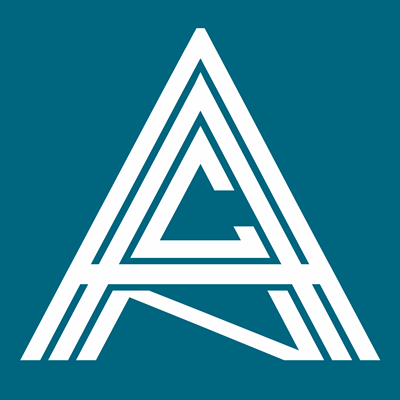
My story began with a simple ear ache that would not go away. After trying an off-the-shelf antibiotic and, subsequently, a cortisone prescription to no success, I was referred to the ENT clinic at the hospital.
The doctor at the clinic told me that I had age-related hearing loss. I had a hard time accepting this. My hearing up to that point had not been an issue. My tests showed 60% hearing in one ear and 80% in the other with 100% speech recognition. On the off-chance that my condition was attributable to sudden hearing loss, my doctor treated me with four intratympanic dexamethasone injections in my middle ear. I assure you that was not a pleasant experience!
I continued to experience pressure and aural fullness in my ear. At times, it felt like something was pushing against my tympanic membrane. I was then prescribed a course of Prednisone which led to no change in my condition. At this point, another doctor in the clinic referred me for a contrast MRI. In spite of the doctor’s request, the technician refused to give me contrast. As a result, I had to return for a second MRI after the first one revealed there was indeed a problem!
My contrast MRI report indicated that I had an acoustic neuroma (AN) measuring approximately 2 x 1.8 x 1.4 cm, approximately the size of a pecan half. I was relieved to learn that it was benign. During a video-conference with an ENT surgeon and neurosurgeon, the ENT surgeon informed me that I was not a suitable candidate for middle fossa surgery because my acoustic neuroma was too big.
Alternatively, the neurosurgeon proposed translabyrinthine surgery which would result in complete hearing loss, a severed vestibular nerve and could lead to partial facial paralysis or numbness and the possibility of a permanent or temporary palsy (droopy eye and droopy lip). Who wants to gamble with that I thought?
I bought myself time by agreeing to accept a “wait and see” approach in monitoring the growth of my AN. I made it my personal goal to learn as much as I could on the topic of ANs and treatments available in Europe, Canada and the USA. I am glad that I did this as soon as possible as I discovered that my treatment options would become limited if I waited too long to address my condition.
I read journal articles from the Journal of Ontology and Neurotology including a study about Aspirin halting the growth of sporadic vestibular schwannomas. I came across a study from Harvard where stem cells had been injected in the cochlea of mice to restore cilia and hearing. Unfortunately, no human trials have been undertaken.
I also explored whether the palsy could be surgically treated and consulted two independent doctors. The otolaryngologist, specialist in head and neck surgery, told me about the problems related to droopy mouth surgery and facial paralysis, and recommended the CyberKnife as the best course of treatment. I also consulted an ophthalmologist who said it was impossible to correct a drooping eye and achieve a natural look.
After receiving this information, I proceeded to conduct extensive research to explore alternative treatments. Through my research, I found out that Munich, Germany, has the most current CyberKnife S7. According to Medical Device News Magazine, the S7 offers “advanced precision, real time artificial intelligence, motion tracking and delivers radiation treatment in as little as 15 minutes”. I contemplated flying to Munich for treatment but then...COVID made things very complicated to do that safely. Along the way, I learned that Canada doesn’t have a CyberKnife S7 (2020 generation) and my city has the CyberKnife VSI (2009 generation). Also, I discovered that Hamilton and Montreal have CyberKnife M6 (2012).
Determined to find a better solution, I explored various US options in California, Colorado, Florida, Connecticut, and Pennsylvania, among others. During this research, I discovered a link to the American Acoustic Neuroma Association (ANA) and read the information provided by this group. By this time, my husband engaged in my research and stumbled upon the Acoustic Neuroma Association of Canada (ANAC). What a revelation! I became a member and immediately received a phone call from Carole Humphries, Executive Director, who offered both research and evidence-based data. The publications answered most of my questions, but not all. Within 24 hours, Carole connected me with dozens of people across Canada who shared their experiences. This made me realize I was not the only one facing this rare tumour.
It was through ANAC that I learned about Gamma Knife. Carole indicated that Gamma Knife was an alternative to CyberKnife. It was then that I realized that I had been far too focused on CyberKnife.
From that point on, I channelled my energy into exploring the pros and cons of both CyberKnife and Gamma Knife. From the University of Virginia Medical School website, I learned that Gamma Knife is far less invasive than surgery, uses 100X less radiation than CyberKnife and has a radiologic accuracy better than 0.3 mm. The Rocky Mountain Gamma Knife Centre website in Colorado indicated that Gamma Knife has a radiological accuracy down to 0.15 and that Gamma Knife Perfexion is safer because of its tissue-sparing characteristics, and its headframe prevents patient movement during treatment. According to the Mayo Clinic website, Gamma Knife is 95-97% effective and requires only one session to treat an acoustic neuroma. I gained insights
from the Journal of Neurosurgery about long-term outcomes following Gamma Knife radiosurgery (GKRS). The low incidence of developing hydrocephalus after GKRS and the preservation of hearing 15 years post Gamma Knife radiosurgery confirmed that Gamma Knife was the right option for me.
According to the Orange County CyberKnife and Radiation Oncology Centre website in California, the CyberKnife requires multiple treatments, is 90% effective, and could damage the outer targeted area. The odds associated with Gamma Knife were in my favour.
After completing the bulk of my research, I requested that my family doctor make a referral to Toronto Western Hospital. I compiled all of the paperwork that she required for the referral (i.e., audiology testing, MRI reports, MRI CD, medical history) to facilitate my Dr.’s task and expedite the referral process to Dr. Zadeh, head of neurosurgery of the University Health Network.
Dr Zadeh offered me two treatment options during a telephone meeting: 1) Rectosigmoid surgery which would preserve my existing hearing in combination with Gamma Knife six months post surgery to treat the remaining tumour; or, 2) Gamma Knife. I opted for the least invasive surgery, and I am currently awaiting word from the Gamma Knife Clinic for the date of my treatment.
During my discussion with Dr Zadeh at Toronto Western Hospital, I was comforted to know that the hospital staff focuses on the quality of life of the patient and that their goals are congruent with those of the patient. I knew my goals and shared them with the surgeon in order to ensure quality of life. My goals were simple: preserve my hearing, preserve my facial nerves, and preserve my vestibular nerve. From my standpoint, any treatment satisfying these goals would allow me to live my life to the fullest.
My journey made me wonder how many people out there would have relied on one opinion and had the translabyrinthine surgery with its inherent risks, as proposed by the first surgeon. I was thankful that I connected with ANAC and was able to be guided in the right direction to a team of leading neurosurgeons and researchers in the area of acoustic neuromas and brain surgery. It is important for us to realize that perhaps surgeons recommend surgery because that is their specialty. I was so pleased to learn that Dr. Zadeh and her team do both microsurgery, and stereotactic radiation surgery based on the individual needs of the patient and the size of the neuroma. I was happy that I was given alternatives to my treatment plan.
To close off, I would like to leave you with this final thought. It is important to make an informed decision about any recommended medical treatment plan.
You, alone, control the journey and must research your condition and critically examine all the options available. It is critical to formulate precise questions so that the experts can fill in your knowledge gaps. Once you are confident with your understanding of your condition and possible treatments and their associated risks, you can then, if given a choice, select a treatment plan that satisfies your goals.

